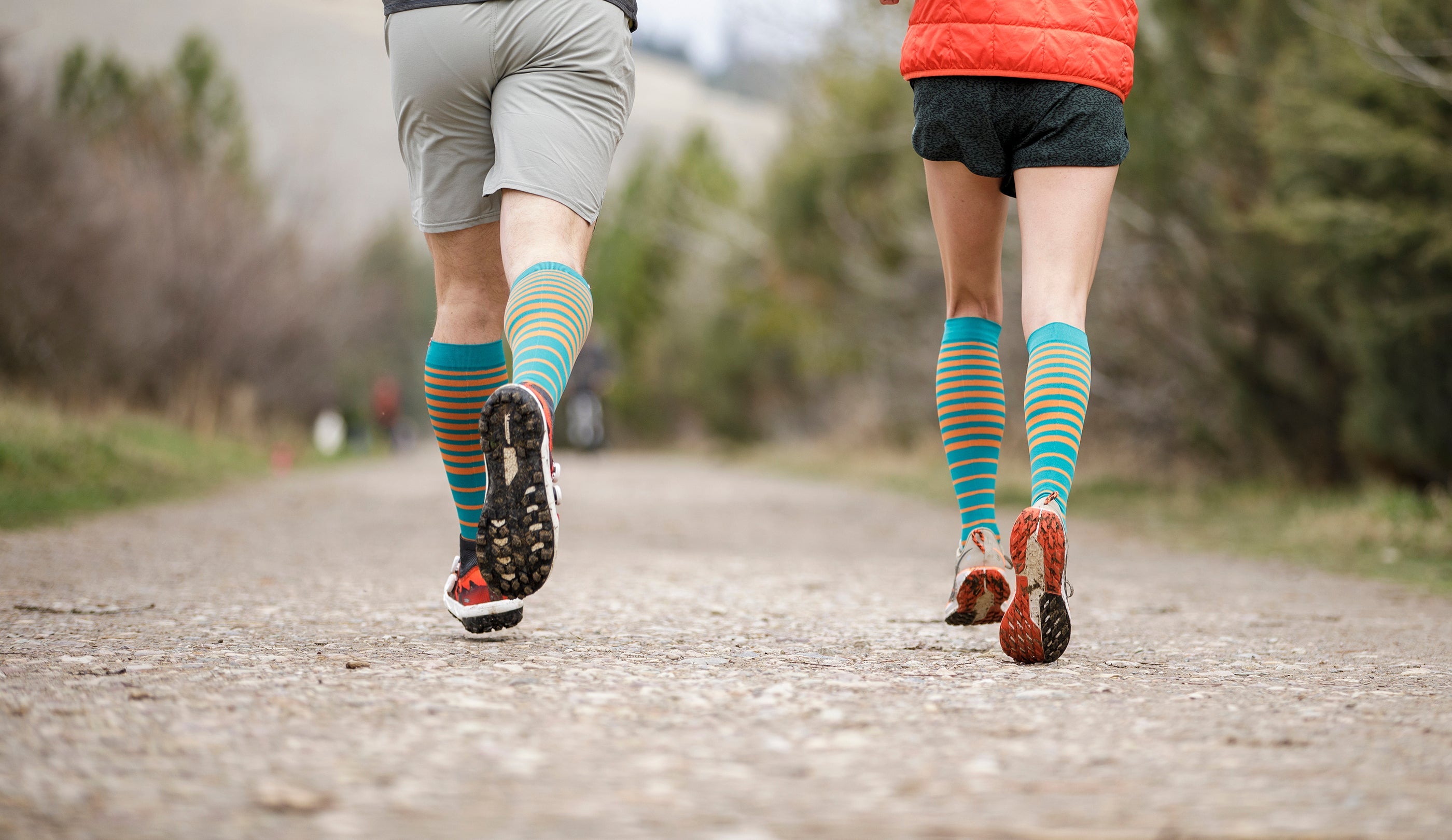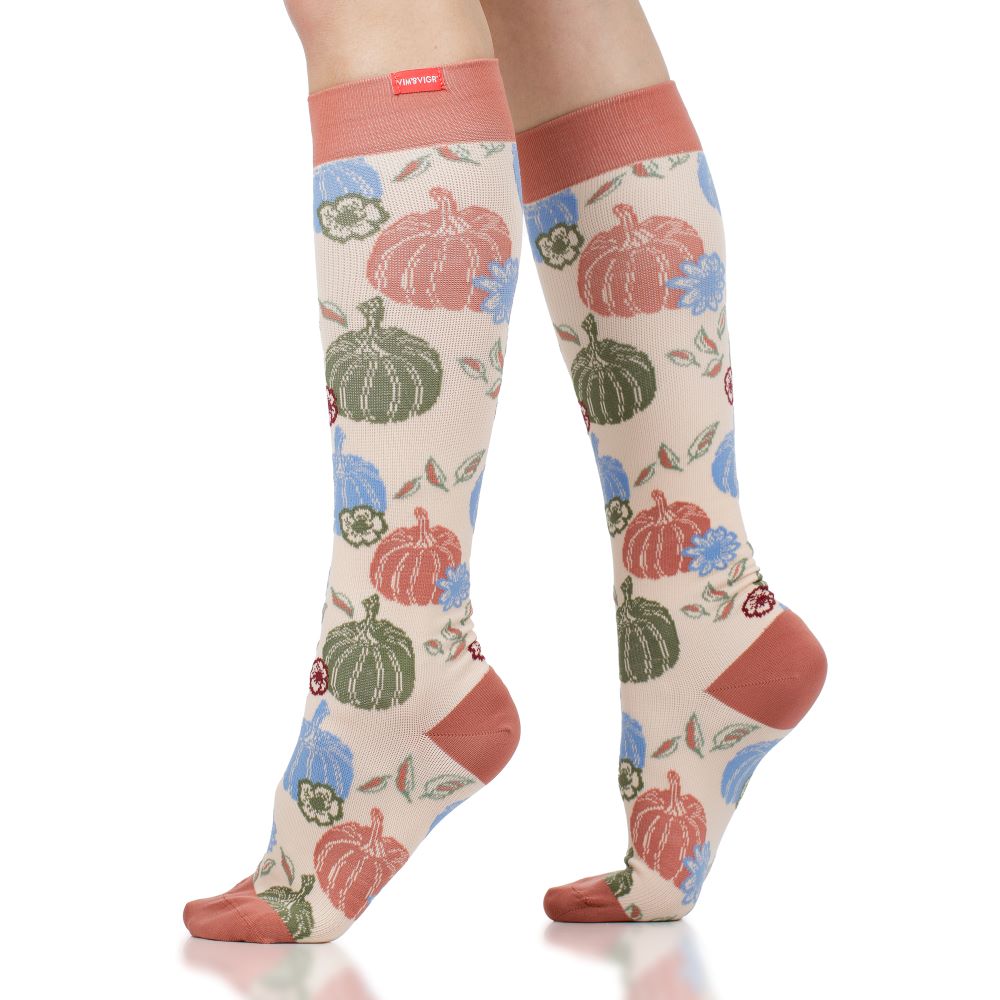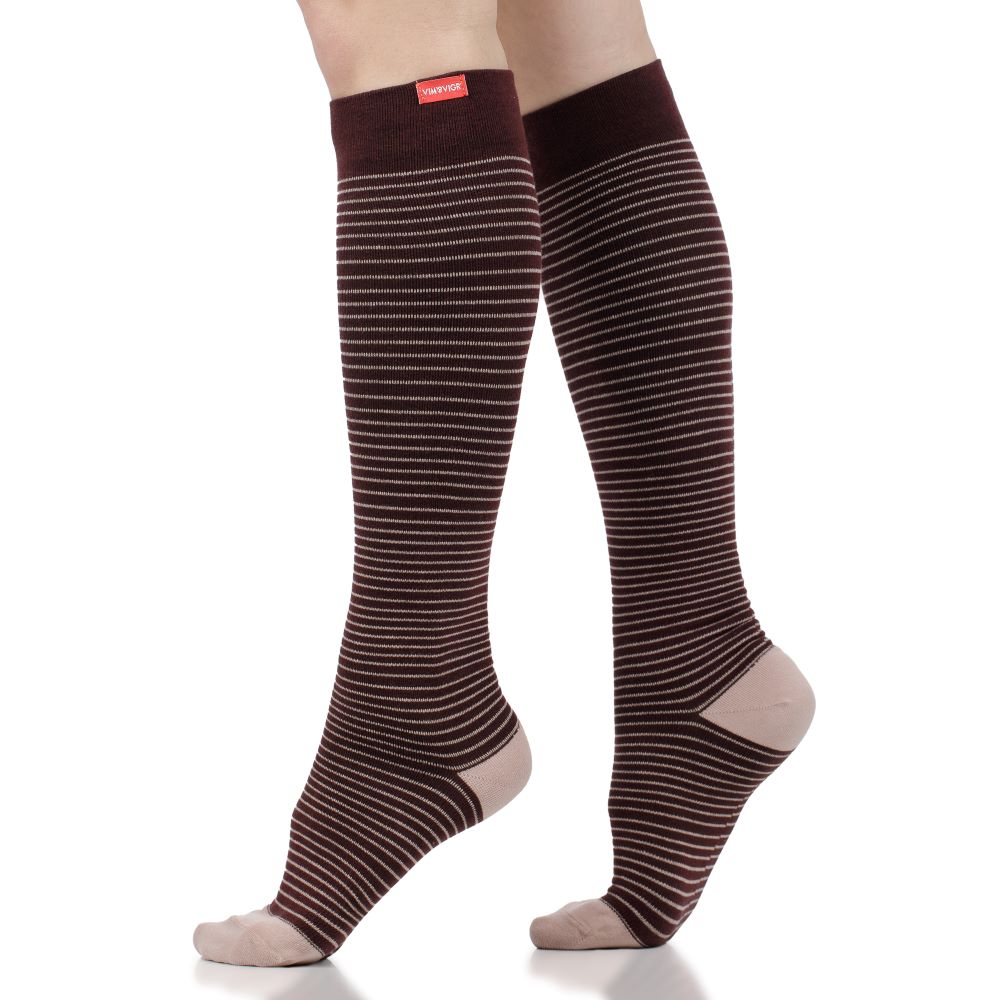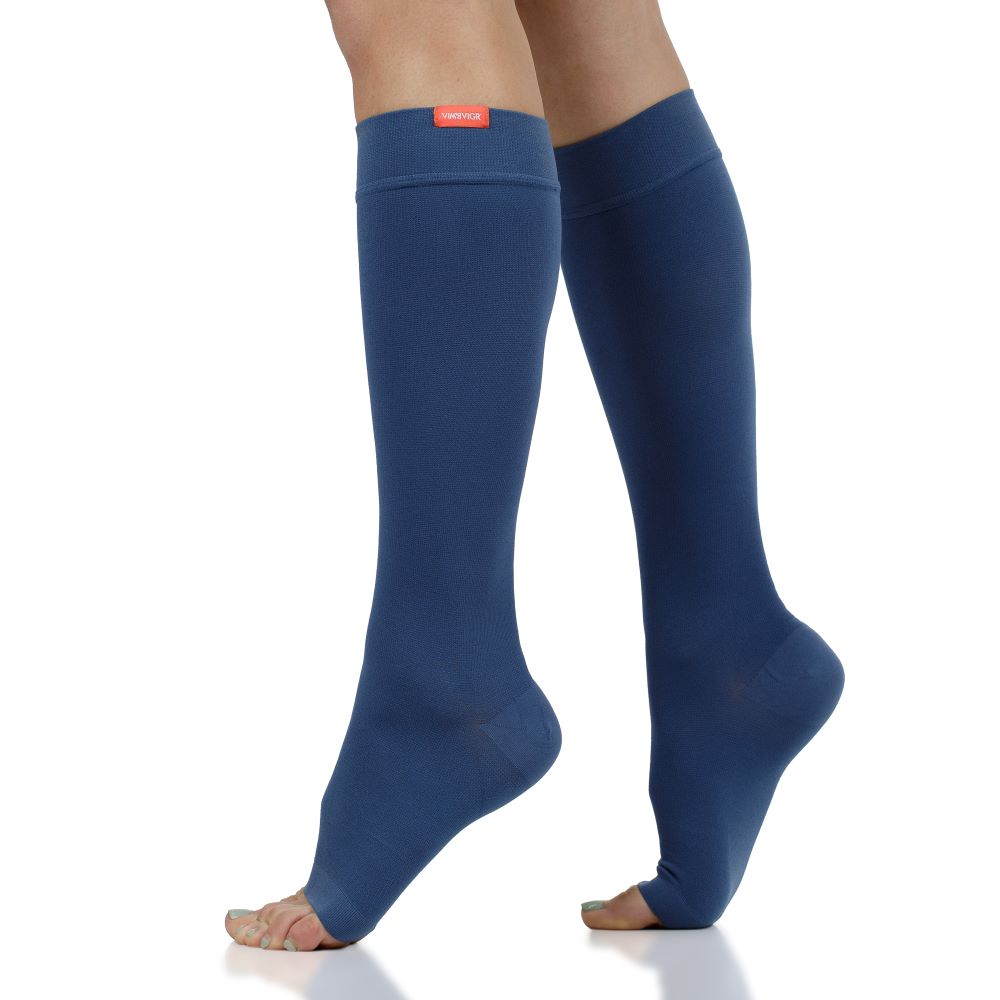How to Make Steel Toe Boots More Comfortable: 10 Proven Tips
Written By Alecsa Stewart
Scientifically Reviewed by Daniel Chantigian
Work boots or steel toed shoes are usually more rigid and less comfortable than casual footwear. This is because work shoes are designed to protect the feet from injury due to falling equipment or other heavy objects, all while supporting the ankles for lengthy periods of time walking or standing. Because work boots are made to be rigid, you may get sore feet or blisters, especially if you have not broken in your boots. Research has found that you could even develop plantar fasciitis, bursitis, or other bone problems. In fact, one article found that over 60% of people have struggled with pain from work boots.
In this article, you will learn how to make steel-toe shoes more comfortable while they protect your feet all day long. Here are our top tips and answers to frequently asked questions about how to improve comfort in protective work shoes.
10 Ways to Make Steel-Toe Boots and Shoes More Comfortable
Wearing protective footwear keeps your feet safe during your work, but it can create some challenges regarding comfort levels throughout your day. Here are 10 proven ways to prevent discomfort or pain despite wearing rigid work boots all day.
1. Choose the Right Size and Fit
The first elements of comfortable footwear are, of course, size and fit to your foot. However, it is not simply purchasing a pair of work boots in your usual shoe size. Steel-toe cap boots are typically worn with thick socks, which automatically requires you to go up a size. Always be sure to wear your work socks when choosing a pair of comfortable steel-toed shoes. You may need to consider a “large toe box” if your feet are at risk of swelling or if you often experience foot pain. For example, if you work in hot conditions (which a construction site often presents), your feet are likely to swell more, which, again, requires more space than in your everyday shoes.
To make sure you are choosing the right work shoes, be sure to go to a brick-and-mortar store so you can try them on with your work socks. Use a measuring tape and your boot manufacturer’s instructions to measure your feet accurately and map the results against their sizes. Then, allow for extra space for swelling. After purchasing, try your boots at home first, for a few hours at a time, and with the socks you will wear on site. This allows you to replicate the same conditions that cause your feet to swell so you can tell if your boots will still be comfortable throughout your shift.

2. Break Your Work Boots in Properly
Another way to increase the comfort of your work boots is to simply wear them in. Even the best-quality leather boots take time to adjust to your foot shape, and when you are using more rigid, steel-toe work shoes, they may feel a little uncomfortable when you first put them on.
Wear your work boots indoors for a few hours first (again, with the same socks you’re going to wear at work). As they get more comfortable, you can take them on a few walks so you are breaking them in gradually without causing your feet to have blisters. Finally, bring them to work, but have a second pair with you (older, more worn-in boots) that you can change into if the newer pair starts to feel a little too rigid. In time, the new boots will finally feel as comfortable as they should!
3. Add Quality Insoles for Extra Cushioning and Support
Depending on your foot shape and whether you have flat feet or need extra arch support, you can use insoles to make up for any lack of comfort and support from your steel-toe cap boots. Since work boots are more rigid and universal, getting custom-made insoles or foot orthotics can make your work boots more comfortable. Insoles are also great for adding cushioning, especially if your feet get sore after working on hard surfaces for long periods of time. Research suggests that insoles may help your feet stay comfortable throughout the day, especially if you stand for most of it. However, be careful. If you are adding insoles, this will reduce the space inside your boot, so consider whether you need to go up a size to stay comfortable.
4. Invest in the Right Socks
Shoes and socks are a co-dependent combo. No matter how comfortable your boots or work shoes are, you can still experience soreness and discomfort if you are not wearing the right pair of socks. At Vim & Vigr, we create high-quality, stylish graduated compression socks that can boost your blood flow and improve energy levels during a long shift while also supporting the feet to help you feel more comfortable.
One study suggested that you could improve comfort by having work socks that are breathable, moisture-wicking, and have temperature regulating properties. In less breathable shoes, like steel-toe cap boots, you need all the ventilation your feet can get to avoid sweaty feet that can cause blisters and irritation. A pair of merino wool socks is ideal in this case. They keep your feet dry and warm in winter, while also allowing enough air circulation to keep you cool in hot weather.
And why compression socks? They improve peripheral circulation and reduce the risk of blood pooling and painful swelling in the lower legs. When you spend a long time on your feet at work, gravity makes it more difficult for blood to flow out of your legs. Graduated compression socks are tighter at the lower end and gradually release pressure upwards, which helps stimulate upwards circulation to prevent swelling or blood clots. Moreover, the gentle massage that compression socks apply to the lower leg muscles is a welcome comfort during a long shift.

Spend your working hours in comfortable compression socks
5. Apply Moleskin to Pressure Points and Blisters for Instant Relief
Padding and blister plasters are essential pain relief tools for aching or blistered feet. If a part of your foot regularly rubs against the shoes (which is common in steel toed boots), applying moleskin pads to the affected area will help your steel toed shoes feel more comfortable. Similarly, blister plasters (especially the padded ones) can be a great preventative tool to keep your feet from forming a full-blown blister. You need to apply these at the first signs of pressure or heat from the rubbing. However, if you wait a little longer, a blister will have formed. So, covering it up won’t make it less sore.
6. Reduce Pressure Points with Proper Lacing Techniques
Another tip for steel-toe cap boots and rigid work shoes is to check how you lace your shoes. The usual way you lace up your boots could be generating pressure points that are easy to fix, simply by changing this small element. Experiment with different styles, such as crisscrossing or the Italian corkscrew, to see what works the best.
Additionally, make sure you are not tightening your boots too much at any one point along the length of your laces. For example, if you have pulled on the laces too hard at the bottom, that area will be under high pressure the rest of the day. You can easily tell if you are tightening your laces too much if you notice redness on the top of your feet when you take your boots and socks off at the end of the day.
7. Stand On an Anti-Fatigue Mat to Ease Foot Strain
If it is available in your workplace, an anti-fatigue mat can ease the strain on your feet. This type of mat can be quite effective at reducing pain on the soles of your feet, but it doesn’t counter the effects of gravity on blood flow. However, the soles of your boots might be too thick or rigid for the mat to be effective.
8. Condition Your Work Boots for Better Comfort
Applying a leather conditioner to work boots helps make them more pliable, softer, and easier to wear for long periods of time. It is also a good way to look after your boots and make them last longer. However, you still need them to be rigid around the ankles to support and protect them - so over-conditioning your boots to make them too soft is not recommended.

Soothe aching muscles by relaxing with compression socks
9. Replace Worn Out Boots Promptly
To make sure your work shoes stay comfortable, you need to be vigilant about how long you have had your boots for and how much they are wearing out. As soon as they start to wear out, steel-toe boots can become uncomfortable. This could increase rubbing and irritation, which could even increase your risk of injury. As we have said above, your boots need to have an appropriate level of rigidity to be supportive and protective. So, inspect them regularly and replace them when the time is right.
10. Get Your Boots Stretched for a Better Fit
A final tip for comfort is to stretch your boots, which is not quite the same thing as wearing them in. This refers to asking a cobbler to stretch them, which is a solution if you bought too-small boots that you cannot return. Be careful, though. Like we said before, you’ll need to adjust for the new size, which includes changing insoles or socks, or both.
How Do You Break In Steel Toe Boots Fast?
The best way to break in steel toe boots is to wear them at home for a few hours at a time. Be sure to do so with the same socks you plan to wear during work. The advantage of this approach is that, if you wear your boots indoors, they will not scuff or pick up any dirt. This will let you return them if you’re not satisfied with the fit. Make sure you keep the original packaging and any receipts and labels.
Once you’re happy with the size, you can also oil or condition your boots to help break them in more quickly.
How Can I Make My Hard Boots More Comfortable?
You can help relax the fibers in your steel-toe cap boots by applying leather conditioner or mink oil, which will soften the material. This can also help your boots “loosen up” a bit, releasing the pressure on your feet to expand the boots without having to get them stretched professionally.
Once you’ve treated the boots with conditioner, wear them around the house, with your favorite pair of merino wool compression socks to help you wear them for longer. This will further push the leather outward, making the boots more comfortable.
Why Do My Work Boots Give Me Blisters?
Blisters are the result of stiff shoes that cause rubbing between feet and socks or socks and boots. These scenarios create so-called “hot spots.” You can notice this when you can feel your feet getting warmer in specific spots as the skin starts to become irritated. At this point, you should remove your boots and socks to put on a blister plaster to cover the affected area. This can help stop a blister before it develops fully.
To avoid blisters, always opt for high-quality antibacterial, hypoallergenic materials for your socks. Compression socks are even better, because of the tight grip they have on the feet, so our recommendation is to wear merino wool compression socks that keep the feet dry and blister-free in almost any temperature and humidity level. And, of course, always ensure you are wearing work shoes and socks that are the right size for you. Always be sure to wear them in for an appropriate amount of time so you can stay comfortable throughout your work day.
References
Pereira-Barriga, M. C., Borrero-Hernández, J. M., García-Iglesias, J. J., López-López, D., Ruiz-Frutos, C., Allande-Cussó, R., & Gómez-Salgado, J. (2024). A review of the injuries caused by occupational footwear. Occupational medicine (Oxford, England), 74(3), 218–224. Read it here.
Frecklington, M., Dalbeth, N., McNair, P., Gow, P., Williams, A., Carroll, M., & Rome, K. (2018). Footwear interventions for foot pain, function, impairment and disability for people with foot and ankle arthritis: A literature review. Seminars in arthritis and rheumatism, 47(6), 814–824. Read it here.
Arceri, A., Mazzotti, A., Liosi, S. G., Zielli, S. O., Artioli, E., Golinelli, D., Brognara, L., & Faldini, C. (2024). What's the Impact of Safety Footwear on Workers Concerning Foot-Related Problems? A Systematic Review. Healthcare (Basel, Switzerland), 12(15), 1522. Read it here.
Charles, T., Mackintosh, D., Healy, B., Perrin, K., Weatherall, M., & Beasley, R. (2011). Merino wool graduated compression stocking increases lower limb venous blood flow: a randomized controlled trial. Advances in therapy, 28(3), 227–237. Read it here.
Partsch, H., Winiger, J., & Lun, B. (2004). Compression stockings reduce occupational leg swelling. Dermatologic surgery: official publication for American Society for Dermatologic Surgery [et al.], 30(5), 737–743. Read it here.


















Leave a comment